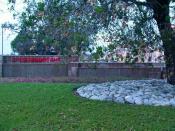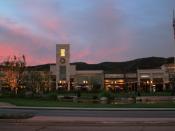The policy process in Australian and indeed most modern governed societies are determined by the dominance of interests/pressure groups. The term interest/pressure group is used to describe groups that try to influence Government policy and/or legislation, to meet their own needs. As Dahl suggests ' by "power" we mean to describe a ... realistic relationship, such as A's capacity for acting in such a manner as to control B's responses' (Dahl, 1956, p.13). Therefore, the action of a group is seen to be more forceful than that of the individual in changing policy, and as such over time and experience people have come together to form these interest groups to obtain a common goal. ' In modern industrial societies, one individual is not likely to carry much weight in the political process, people have found out by experience that they need to join together with others' (Jaensch, 1994, pg. 169).
Interest/pressure groups share the fundamental goal of swaying policy makers to integrate the group's beliefs into public policy.
The variety and range of groups are extensive, however most of these groups can be classed into distinct categories. Firstly there are economic and professional associations (formal), also known as sectional groups, in this category can be defined as the elite "pressure groups". The membership in these groups is primarily made up of people in the industry/professional community. They come together to try to influence the Government in order to promote their common interest. In most cases, these groups want to provide direct economic benefits to their members. Since they are seeking monetary benefits, membership is often restricted to a chosen group of individuals, which often dictated by economic gains (entrepreneurship). Examples of these are manufacturers, bankers and extensive corporate companies whom are seen as the elite (top) of the social groups.



'Interest Groups In The Policy Process'
From reading all of your work it clearly shows that you understand what you are writing about. Very goo references which back up all of your quotes and evidence.
Well done on all your essays and keep up the good work...can't wait for more.
0 out of 0 people found this comment useful.